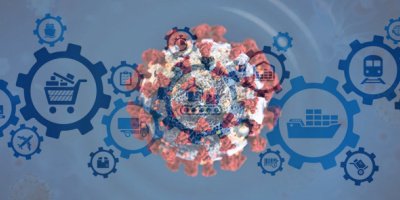As I explained in my column last week, IBM's announcement of BladeCenter is one example of a sea change that is taking place in server design. Across the IT industry, hardware manufacturers are looking for ways to maximize the performance of server components while minimizing their size, power consumption, and cost. Blade servers represent a giant leap forward in this effort, and they epitomize what most servers will look like in several years. Here are the two salient features of this "new look."
- Disaggregation of processor, storage, and network components. In the near future, most new servers won't be preconfigured, standalone units that contain most of the components needed to deliver IT services. Such servers will be replaced by "blades" or "bricks" that contain processing, storage, or network capacity. Companies will create servers from these building blocks by sliding them into chassis in much the same way that we put feature cards into our PCs. Such servers will offer instant, on-the-fly reconfiguration to meet changing needs.
- Clustering and virtualization at the component level. Today, most clustering and virtualization occurs at the level of the standalone server. We cluster multiple servers together for failover purposes or to handle very large processes and databases, and we create virtual servers within partitions of these systems. However, as servers become disaggregated into separate processor, storage, and network components, most clustering and virtualization will occur at the component level. To manage a particular Web application, for instance, a company might cluster five processor blades into a single processor image, connect that image to a storage image made up of four clustered storage blades, then link both images to two clustered network blades. As the application's requirements change, the company will simply reconfigure these virtual images.
While this design revolution will make servers far more flexible, it will also make them much cheaper. Once companies can buy only the processor, storage, or network capacity they need and then manage each of these functions as independent pools, they will dramatically reduce the unused capacity in their IT infrastructures. This reduction, coupled with the sharing of resources such as power supplies and other server components across a larger number of components, will significantly reduce hardware costs.
Do Blade Servers Make Sense for Mid-Market Organizations?
By now, you're probably wondering whether your company's next system should utilize a blade server design such as IBM's BladeCenter. If you're a mid-market company and your primary goal is to spend less money on hardware, your company probably should not take the blade server leap...at least for the next year or two. The reason for this is simple: Unless you're an enterprise that can buy dozens of blades, you probably won't realize adequate savings to justify your investment.
While the power, cooling, and floor space costs for blade servers are lower than those for traditional rack-mounted systems, they frequently cost more on an up-front basis. This may seem odd because in theory, a single blade server should cost less than a handful of traditional rack-mounted servers that have the same number and type of processors. After all, each rack-mounted server has its own chassis, power supply, media bays, and other components, while the blade server shares this hardware across multiple blades.
In practice, however, today's blade servers often cost more than an equivalent number of rack-mounted servers. This is because blade server vendors have made considerable investments in designing their own proprietary chassis, blades, and other components. By contrast, traditional rack-mounted servers use cheaper industry-standard components.
As a case in point, let's tally up the price for a BladeCenter that we can compare to a rack-mounted Intel server with similar attributes. Based on IBM's list prices, a BladeCenter that is fully populated with 14 blades--each with a single Intel Xeon processor running at 2.0 GHz, 512 MB of memory, and a 40 GB IDE disk drive--costs $34,280. That equates to $2,448 per single-processor blade. By comparison, IBM offers its xSeries Model 335, a 1U rack-mounted server that, like BladeCenter, offers 1 or 2 Xeon processors, 512 MB of memory, and a 40 GB IDE disk drive. As a uniprocessor, the x335 carries a list price of $2,219--more than $200 less per CPU than a BladeCenter. The Model 335 also offers several things you can't get on BladeCenter, including PCI slots and expandability to 80 GB IDE drives.
To be fair, BladeCenter can pack twice the processing performance into the same space as the Model 335, and it consumes far less power and cooling capacity as well. As a result, BladeCenter will offer a lower overall cost of ownership for enterprises that support hundreds of Intel servers in a space-constrained environment. However, most mid-market organizations support less than 100 Intel servers and are constrained not so much by floor space or power consumption as they are by up-front costs. That makes BladeCenter and most other blade servers hard to justify for smaller organizations.
While blade servers may not make immediate sense for your organization, there's a good chance that they will do so in the future. Though today's products rely on proprietary designs, movements are underway within the industry to establish standards for blade server chassis, bus architectures, interfaces, and other components. In one to two years, these standards could allow third-party vendors to create a host of cheaper blades that will be interchangeable between the chassis of different vendors. At the same time, blade server management applications will emerge and become integrated with existing systems management suites. These developments will help to create a new generation of industry-standard blade servers that cost far less to own and operate than today's models.
In short, today's blade servers probably won't make financial sense for your company unless you need dozens of them. If you do have such a need, you should realize that in two to three years, the next generation of industry-standard chassis may not support the blades you buy today. As such, you should look for a positive return on your investment within that time frame. If you cannot meet this tough requirement, I would advise you to put your blade server plans on the shelf. However, be ready in a year or two to dust those plans off, because the server market is about to become a very different place.
Lee Kroon is a Senior Industry Analyst for Andrews Consulting Group, a firm that helps mid-sized companies manage business transformation through technology. You can reach him at






















 More than ever, there is a demand for IT to deliver innovation. Your IBM i has been an essential part of your business operations for years. However, your organization may struggle to maintain the current system and implement new projects. The thousands of customers we've worked with and surveyed state that expectations regarding the digital footprint and vision of the company are not aligned with the current IT environment.
More than ever, there is a demand for IT to deliver innovation. Your IBM i has been an essential part of your business operations for years. However, your organization may struggle to maintain the current system and implement new projects. The thousands of customers we've worked with and surveyed state that expectations regarding the digital footprint and vision of the company are not aligned with the current IT environment. TRY the one package that solves all your document design and printing challenges on all your platforms. Produce bar code labels, electronic forms, ad hoc reports, and RFID tags – without programming! MarkMagic is the only document design and print solution that combines report writing, WYSIWYG label and forms design, and conditional printing in one integrated product. Make sure your data survives when catastrophe hits. Request your trial now! Request Now.
TRY the one package that solves all your document design and printing challenges on all your platforms. Produce bar code labels, electronic forms, ad hoc reports, and RFID tags – without programming! MarkMagic is the only document design and print solution that combines report writing, WYSIWYG label and forms design, and conditional printing in one integrated product. Make sure your data survives when catastrophe hits. Request your trial now! Request Now. Forms of ransomware has been around for over 30 years, and with more and more organizations suffering attacks each year, it continues to endure. What has made ransomware such a durable threat and what is the best way to combat it? In order to prevent ransomware, organizations must first understand how it works.
Forms of ransomware has been around for over 30 years, and with more and more organizations suffering attacks each year, it continues to endure. What has made ransomware such a durable threat and what is the best way to combat it? In order to prevent ransomware, organizations must first understand how it works. Disaster protection is vital to every business. Yet, it often consists of patched together procedures that are prone to error. From automatic backups to data encryption to media management, Robot automates the routine (yet often complex) tasks of iSeries backup and recovery, saving you time and money and making the process safer and more reliable. Automate your backups with the Robot Backup and Recovery Solution. Key features include:
Disaster protection is vital to every business. Yet, it often consists of patched together procedures that are prone to error. From automatic backups to data encryption to media management, Robot automates the routine (yet often complex) tasks of iSeries backup and recovery, saving you time and money and making the process safer and more reliable. Automate your backups with the Robot Backup and Recovery Solution. Key features include: Business users want new applications now. Market and regulatory pressures require faster application updates and delivery into production. Your IBM i developers may be approaching retirement, and you see no sure way to fill their positions with experienced developers. In addition, you may be caught between maintaining your existing applications and the uncertainty of moving to something new.
Business users want new applications now. Market and regulatory pressures require faster application updates and delivery into production. Your IBM i developers may be approaching retirement, and you see no sure way to fill their positions with experienced developers. In addition, you may be caught between maintaining your existing applications and the uncertainty of moving to something new. IT managers hoping to find new IBM i talent are discovering that the pool of experienced RPG programmers and operators or administrators with intimate knowledge of the operating system and the applications that run on it is small. This begs the question: How will you manage the platform that supports such a big part of your business? This guide offers strategies and software suggestions to help you plan IT staffing and resources and smooth the transition after your AS/400 talent retires. Read on to learn:
IT managers hoping to find new IBM i talent are discovering that the pool of experienced RPG programmers and operators or administrators with intimate knowledge of the operating system and the applications that run on it is small. This begs the question: How will you manage the platform that supports such a big part of your business? This guide offers strategies and software suggestions to help you plan IT staffing and resources and smooth the transition after your AS/400 talent retires. Read on to learn:
LATEST COMMENTS
MC Press Online